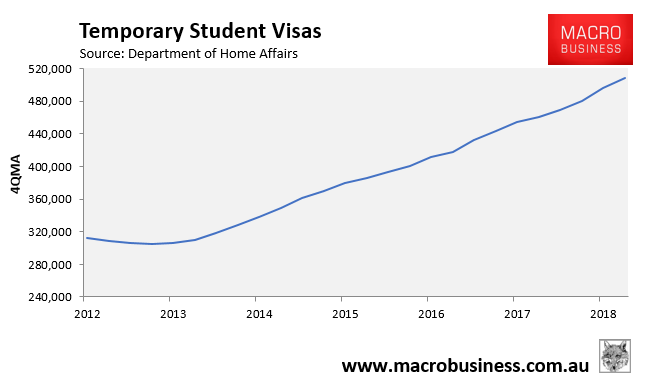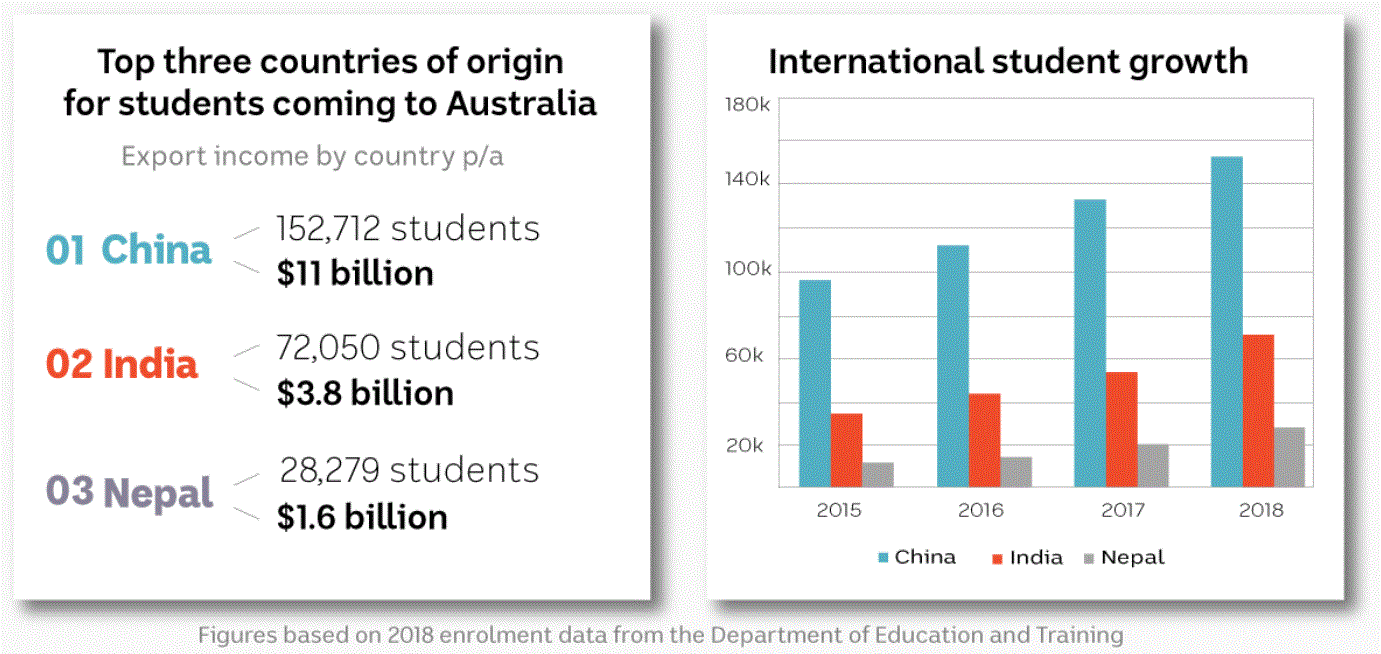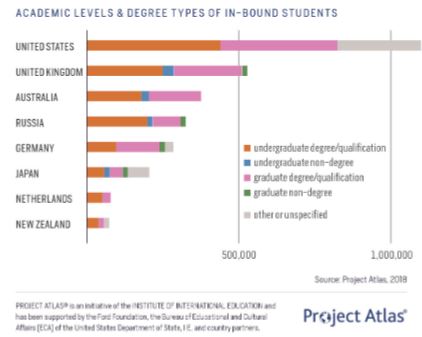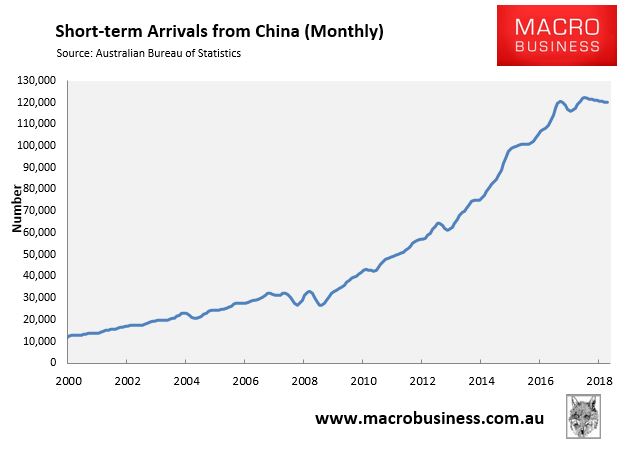As regular readers will know, China has been at the forefront of Australia’s international student boom.
In the five years to December 2018, the number of international students residing in Australia surged by around 60% to half-a-million, as illustrated in the next chart:

The lion’s share of international students studying in Australia comes from China, whose numbers have ballooned from around 95,000 in 2015 to just over 150,000 as at 2018, contributing around $11 billion in export income:

Earlier this month, The Australian reported that “the highly lucrative six-year boom in Chinese students is over”:
Ahead of the release of official figures, a senior Department of Home Affairs official briefed universities last week telling them that visa applications from Chinese students were flat…
The flattening out in numbers of Chinese students starting courses is not yet visible in the monthly data issued by the federal Department of Education and Training.
The March figures, which will give the full picture of international student enrolments this year, are not yet available.
This conclusion was tentatively supported by the latest overseas arrivals and departures data from the Australian Bureau of Statistics, released earlier this month, which revealed that short-term arrivals from China declined for nine consecutive months to March, and were lower than August 2017:
According to research conducted by Project Atlas, Australia ranked third in the world for international students in 2018, well behind leader United States, where almost 1.1 million international students studied during the 2017 to 2018 school year:

However, there are concerns within the United States university sector that the Trump Administration’s trade war with China could kill the international student trade:
With more than 360,000 Chinese students enrolled in U.S. institutions, Chinese visitors account for one-third of the foreign undergraduates and graduate students studying in the United States…
Much of America’s higher education system couldn’t survive without that money… the Trump administration’s trade war with China could pose a severe, and for some institutions even existential, threat… as negotiators on both sides seek leverage on each other, it’s likely that higher education will end up in the crosshairs. That could happen because someone in Beijing brings up higher education as a possible U.S. export industry to target…
The United States has already been unilaterally curbing Chinese students’ access. Some want to go further. On Tuesday, congressional Republicans introduced legislation to restrict the ability of researchers affiliated with the Chinese military from receiving student or research visas to the United States…
These possibilities pose a significant and underappreciated risk to U.S. schools. The shock of a cutoff of Chinese students’ tuition could weaken many schools’ financial position significantly.
On the face of it, fewer Chinese students studying in the United States could be a boon for Australia’s universities, since they would likely increase their market share.
On the other hand, with China’s currency under pressure owing to the trade war, the central government may try to keep more students at home in a bid to prevent the outflow of capital and further currency depreciation.
Whether the trade war will be good or bad for Australia’s universities is anybody’s guess and depends on the policy response from China.
One thing’s for certain, Australia’s universities have become overly reliant on Chinese students and badly need to diversify towards other sources to mitigate the risks.


